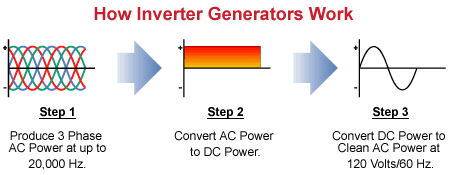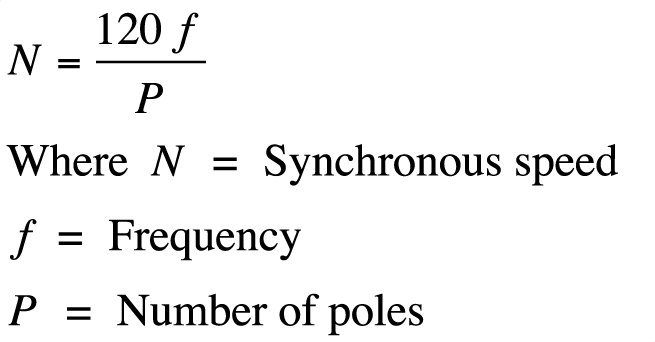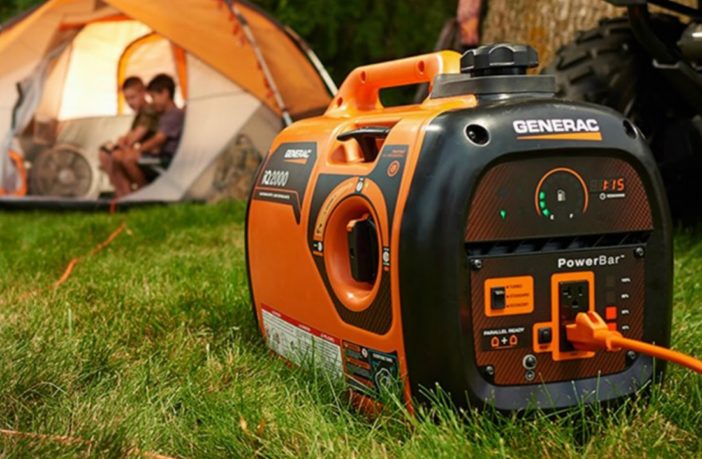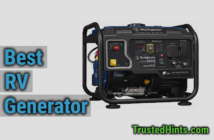The technology has reached far beyond what we can imagine and as a result, there are so many great machines are being developed, which makes life a whole lot easier and the generator is no exception.
Generators are around for quite a while now, and they are very useful when the light goes out or when you go camping.
In this article, we will explain what the inverter generator is, and how does it work.
What is an inverter generator?
Both conventional generator and inverter generator uses fossil fuel to run an internal combustion engine which drives the rotor of the generator. This rotor cuts the electric flux, and voltage is induced through the movement of the conductor. This whole phenomenon is known as electromagnetic induction.
The inverter generator is the same as the conventional generator except for some extra circuitry which makes it superior in every aspect.
The conventional generator produces AC power directly but the inverter generator produces AC power, then converts it to DC power, and then again converts it to AC power for clean power and maximum fuel efficiency.
Let’s understand this in detail.
How does an inverter generator work?


As I said earlier, the inverter generator produces the AC power then the rectifier converts it to DC power, and then the inverter circuitry converts it back to AC power. This process has a lot of advantages which are following.
First of all, take a look at the below equation. It’s not too hard, just simple math and by understanding this, you will understand all the things.


Here p is the number of poles used in the generator. Poles consist of winding of coils, and they are responsible for producing electricity. All the generators and alternators have two poles.
F is the frequency of current and countries like the USA and Canada have 60Hz frequency. And the frequency of power must be 60Hz otherwise, it will damage your electric appliances.
N is the speed of the rotor. By varying the speed of the rotor you can get the power of different frequencies.
So in order to produce the 60Hz of power supply, the generator speed must always be 3600 RPM (rotation per minute) no matter what.
Now because of the inverting circuitry of the inverter generator, it does not need to run at a constant 3600 RPM to produce 60Hz of supply. The inverter circuit of this generator can convert any amount of DC power be it 20 volts or 100 volts to 120-volt 60Hz AC power. So the generator will produce the AC power according to load demand, then it will be converted to DC and then to AC. So that is why the inverter generators are very fuel-efficient.
But in the case of a non-inverter generator, it does not have any inverting circuit and hence it produces direct AC power. So that is why it has to run at a constant 3600 RPM to produce a 60 Hz supply.
Let’s take an example. Suppose you want to run a 100-watt light bulb using the non-inverter generator. In order to run this bulb, it has to run at 3600 RPM speed; thus, it wastes a significant amount of fuel.
But the inverter generator will decrease its speed as per the load demand, and thus it will waste less fuel.
Read Also,
Drawbacks of inverter generator
The inverter generator has so many advantages that the list endless. We encourage you to check out our article, the difference between inverter and non-inverter generator and which one to choose to know all the advantages of an inverter generator.
Now we will talk about some of the drawbacks of an inverter generator.
First of all, the inverter generator is relatively expensive when you go for high power output or features like dual-fuel capability, parallel capability, electric start, and so on.
But if you don’t want such features, then you can opt-in for a simple inverter generator with minimal features, and it will do the job.
Please note that the operating/running cost of the inverter generator at maximum load is more when running it on the maximum load.
So if you have occasional use of a generator or you are running your generator at maximum load then you are better off buying a non-inverter generator such as a dual-fuel generator, RV generator, or portable solar generator.
But if you are running your generator fairly often at lower loads, then it is better to buy an inverter generator because at lower loads you will be saving a great deal of money on fuel.




